In the 1960s, men's tracksuits evolved into a statement of style and comfort, breaking free from traditional athletic wear. You'll find relaxed silhouettes designed for leisure, made from innovative nylon and polyester blends. Bold colors and dynamic patterns reflected the era's cultural shifts and self-expression. Brands like Adidas revolutionized the scene with their iconic three-stripe design. Tracksuits became a staple, embraced by both athletes and fashion enthusiasts, symbolizing a new laid-back lifestyle. Understanding this transformation gives you insight into how these pieces influence modern fashion trends, revealing a rich history worth exploring further.
Evolution of Tracksuit Design
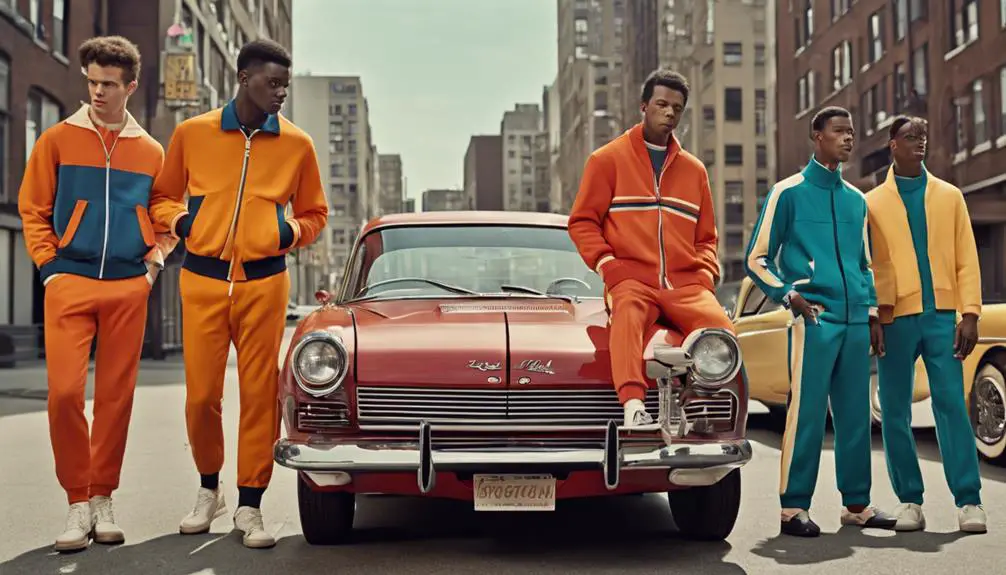
In the vibrant landscape of 1960s fashion, tracksuits transformed from mere athletic wear into a symbol of casual style and comfort. You'll notice the evolution of tracksuit design during this decade emphasized relaxed silhouettes, reflecting society's growing preference for comfort over strict formality. The introduction of synthetic materials like nylon and polyester enhanced durability, allowing you to move freely whether on the track or lounging with friends.
Bold color block patterns emerged, capturing the energetic spirit of the era and aligning with broader cultural shifts. Brands like Adidas and Puma played significant roles in popularizing tracksuits, making them fashionable not only for sports but also for everyday wear. This shift heralded the rise of athleisure trends, where functionality and style coalesced seamlessly.
Functional elements were key in this evolution. Zippered pockets offered practicality, allowing you to carry essentials without compromising aesthetics. Meanwhile, adjustable waistbands guaranteed a comfortable fit, catering to active lifestyles. The 1960s redefined tracksuit design, establishing a foundation that continues to influence modern fashion, blending comfort and functionality with bold style choices.
Popular Materials and Fabrics
Tracksuits of the 1960s showcased a variety of popular materials that enhanced both performance and style. Primarily, cotton and polyester blends dominated the scene, offering comfort and durability, perfect for both athletic activities and casual wear. As the decade progressed, nylon gained traction due to its lightweight and water-resistant properties, making it an ideal choice for sportswear, especially during unpredictable weather.
The emergence of terrycloth added another dimension to vintage tracksuits, providing a soft and absorbent texture that was particularly favored for leisure and training suits. You could often find these tracksuits bursting with bold colors and dynamic patterns, reflecting the vibrant fashion trends of the era. Many brands experimented with two-tone designs, which not only looked striking but also allowed wearers to express their individuality.
In an effort to cater to the growing interest in athleticism, many tracksuits incorporated gusseted features, enhancing mobility and making them suitable for a range of activities. This blend of style, comfort, and functionality marked the 1960s as a pivotal period in the evolution of tracksuit materials, setting the stage for future innovations in sportswear.
Iconic Brands of the Era
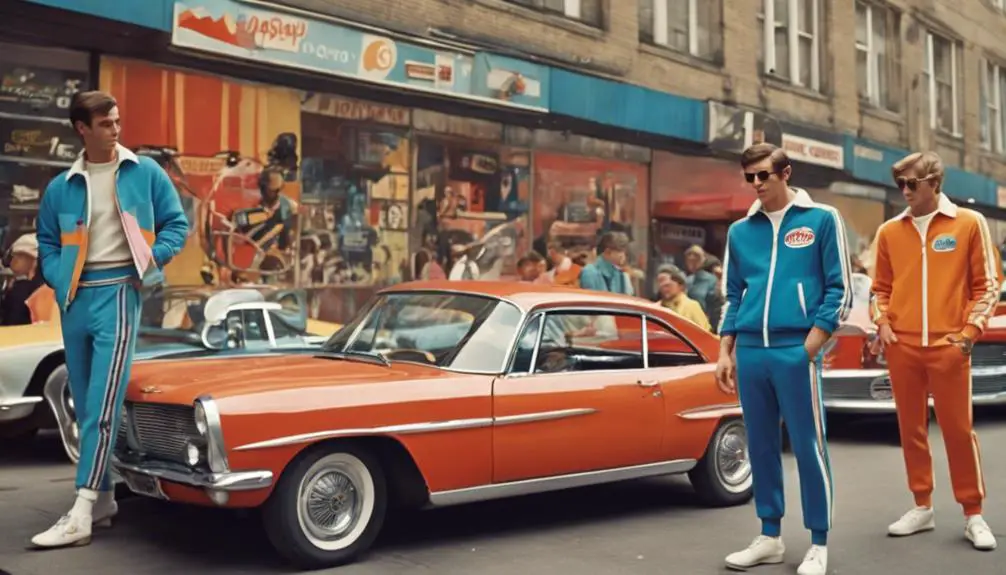
What made the 1960s a transformative decade for men's tracksuits was the rise of iconic brands that shaped the athletic and casual wear landscape. Champion emerged as a leader with its innovative Reverse Weave technology, offering durability and comfort that appealed to both athletes and everyday consumers. At the same time, Adidas introduced its revolutionary three-stripe design, which became a hallmark of performance and style in tracksuits, influencing sports fashion for years to come.
Other notable brands like Puma and Diadora also gained traction during this era, providing tracksuits that catered to athletic pursuits while seamlessly integrating into casual wear. The trend of university-branded tracksuits further showcased pride in collegiate sports, marking a significant cultural shift in men's fashion.
| Brand | Key Feature |
|---|---|
| Champion | Reverse Weave Technology |
| Adidas | Iconic Three-Stripe Design |
| Puma/Diadora | Versatile Athletic & Casual Wear |
These brands didn't just sell tracksuits; they created a lifestyle that blended sportsmanship with everyday style, paving the way for the athleisure movement that followed.
Cultural Influence on Fashion
The 1960s' cultural landscape dramatically reshaped men's fashion, with tracksuits emerging as a symbol of the era's evolving attitudes toward comfort and self-expression. This decade marked a significant cultural shift towards casual fashion, where tracksuits became a popular choice for both athletic and leisure activities. Their relaxed silhouettes reflected a growing preference for comfort, challenging traditional styles.
Bold colors and patterns characterized tracksuit designs, drawing inspiration from the vibrant Pop Art movement that defined the era. This visual dynamism not only made tracksuits eye-catching but also aligned them with the spirit of youth rebellion and the counterculture movement. Icons like The Beatles and The Rolling Stones sported tracksuits, further embedding these garments into the fabric of contemporary culture.
As tracksuits gained popularity, they laid the groundwork for the modern athleisure trend. The blend of functionality and fashion transformed how you viewed casual wear, making it an acceptable choice for various settings. This cultural influence not only shaped men's fashion during the 1960s but also paved the way for tracksuits to endure as a staple in your wardrobe today, embodying the freedom and creativity of an unforgettable era.
Tracksuits in Sports and Leisure
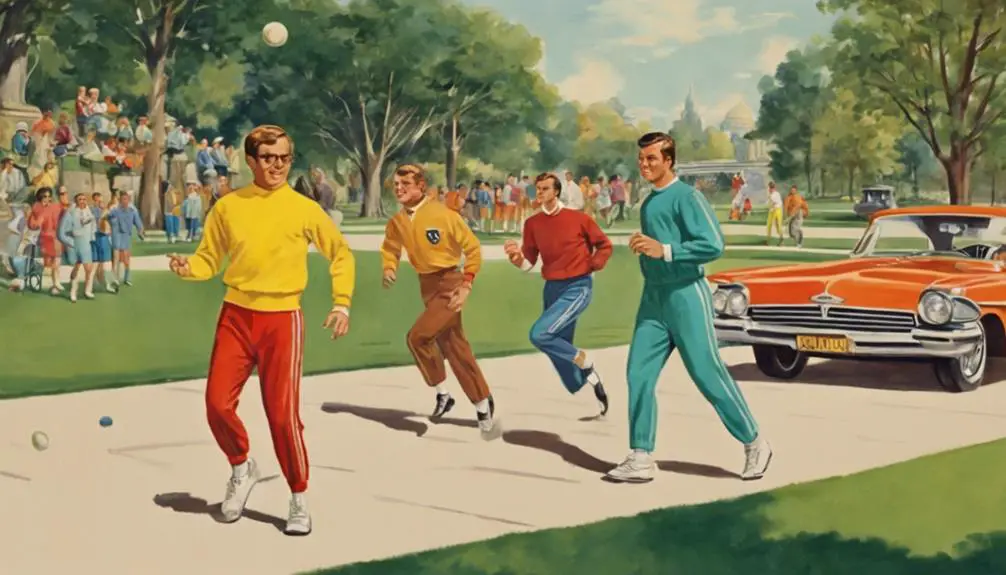
During the 1960s, a significant shift occurred in athletic wear that transformed how men engaged in sports and leisure. The emergence of tracksuits marked a pivotal change, blending functionality with style. Made from lightweight polyester or nylon, these garments provided comfort and flexibility, ideal for various activities like jogging, tennis, and team sports.
The tracksuit quickly became emblematic of the growing athleisure trend, appealing to both serious athletes and casual wearers. Iconic brands like Adidas and Puma led the charge, introducing innovative designs that showcased contrasting colors and bold logos.
You might find the following aspects of tracksuits particularly remarkable:
- Versatility: Perfect for both sports and casual outings.
- Comfort: Lightweight fabrics guarantee ease of movement.
- Cultural Symbol: Represented the fitness movement and youth culture.
Key Color Trends and Patterns
Bold color schemes and dynamic patterns defined the aesthetic of men's tracksuits in the 1960s, capturing the vibrant spirit of the era. You'd notice vibrant hues like electric blue, rich red, and bright yellow dominating the scene, reflecting a newfound passion for eye-catching fashion. Color-blocking and two-tone designs became staples, with contrasting colors accentuating sleeves and pant legs, creating a striking visual appeal.
Stripes were ubiquitous, often running down the sides of pants and along jacket sleeves, reinforcing the sporty aesthetic that was so prevalent. As the decade progressed, pastel shades emerged, offering a softer alternative that resonated with the counterculture movement. This shift in color trends highlighted not just fashion preferences but also larger cultural shifts towards more relaxed styles and individual expression.
Tracksuits evolved into a canvas for self-identification, allowing wearers to showcase their personality through color and design. The blend of bold and pastel options catered to diverse tastes, embodying the changing societal norms of the time. Ultimately, these key color trends and patterns in men's tracksuits not only defined an era but also reflected the dynamic interplay between fashion and cultural identity.
Vintage Tracksuit Collecting
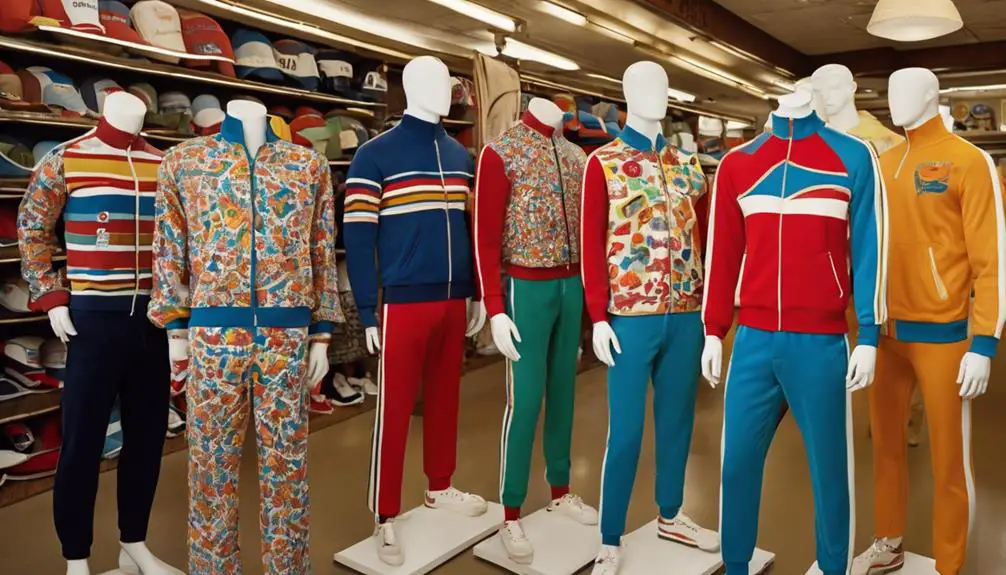
As the vibrant color trends and patterns of the 1960s captured the essence of the time, vintage tracksuit collecting emerged as an enchanting pursuit for fashion enthusiasts and history buffs alike. Collectors often focus on iconic brands like Puma, Diadora, and Champion, which are celebrated for their unique designs and quality materials. Understanding the historical context of these brands can enhance your appreciation for their contributions to vintage fashion, particularly in tracksuit styles that reflect the era's bold aesthetic vintage clothing trends.
When hunting for vintage tracksuits, you'll want to keep an eye out for:
- Bold color-blocking that reflects the daring spirit of the decade
- Unique prints that tell a story of cultural trends
- Rare fabric compositions that elevate a tracksuit's value
The price range for authentic vintage tracksuits can vary considerably. Unique or rare items often command several hundred dollars, depending on their condition and brand. Thanks to online marketplaces and vintage shops, collectors now have easier access to these coveted pieces, allowing for negotiation and the chance to snag better deals. The rising interest in vintage athleisure has only fueled demand for 1960s tracksuits, making them highly sought after by both fashion enthusiasts and dedicated collectors alike. Embracing this trend, you can celebrate a unique slice of history through your wardrobe.
Modern Revival of 1960s Styles
Nostalgia for the 1960s has sparked a modern revival of tracksuit styles, bridging the gap between past and present in men's fashion. You'll find that contemporary designers are embracing the relaxed silhouettes that defined the era, highlighting the tracksuit's comfort and sporty appeal. This revival isn't merely a nod to vintage aesthetics; it's a seamless integration into today's athleisure trend.
Modern tracksuits often feature bold colors and unique cotton blends, echoing the vibrant palette of the 1960s. Oversized fits are making a comeback, reflecting the casual vibe of that time while catering to current tastes. Retro branding plays a significant role, with distinctive logos and designs that evoke a sense of nostalgia, appealing to both collectors and everyday wearers alike.
As you navigate contemporary fashion, you'll notice how these updated tracksuits serve as staples in casual wardrobes, perfectly blending vintage charm with modern functionality. The resurgence of interest in 1960s styles not only highlights the timeless nature of tracksuits but also demonstrates how past influences can shape and enhance current trends in men's fashion today.
Frequently Asked Questions
Were Tracksuits Popular in the 60s?
Yes, tracksuits were incredibly popular in the '60s. They reflected a shift towards comfort in fashion, blending athleticism with casual style, and quickly became essential for both sports enthusiasts and everyday wearers alike.
What Did Men Typically Wear in the 1960s?
In the 1960s, you'd typically see men sporting tailored suits, casual button-ups, and slacks. As comfort gained importance, styles included denim jeans and relaxed-fit shirts, reflecting a cultural shift towards more laid-back, expressive fashion choices.
When Were Mens Tracksuits Popular?
Men's tracksuits gained popularity in the 1960s, reflecting a shift in fashion towards comfort and casual wear. You'd notice their appeal in athletic settings and everyday life, becoming a stylish choice for many.
What Were Popular Accessories for Men in the 1960s?
In the 1960s, you'd find men accessorizing with wide-brimmed fedoras, stylish scarves, oversized sunglasses, bold leather belts, and luxurious wristwatches. These items not only enhanced outfits but also reflected personal style and societal trends.


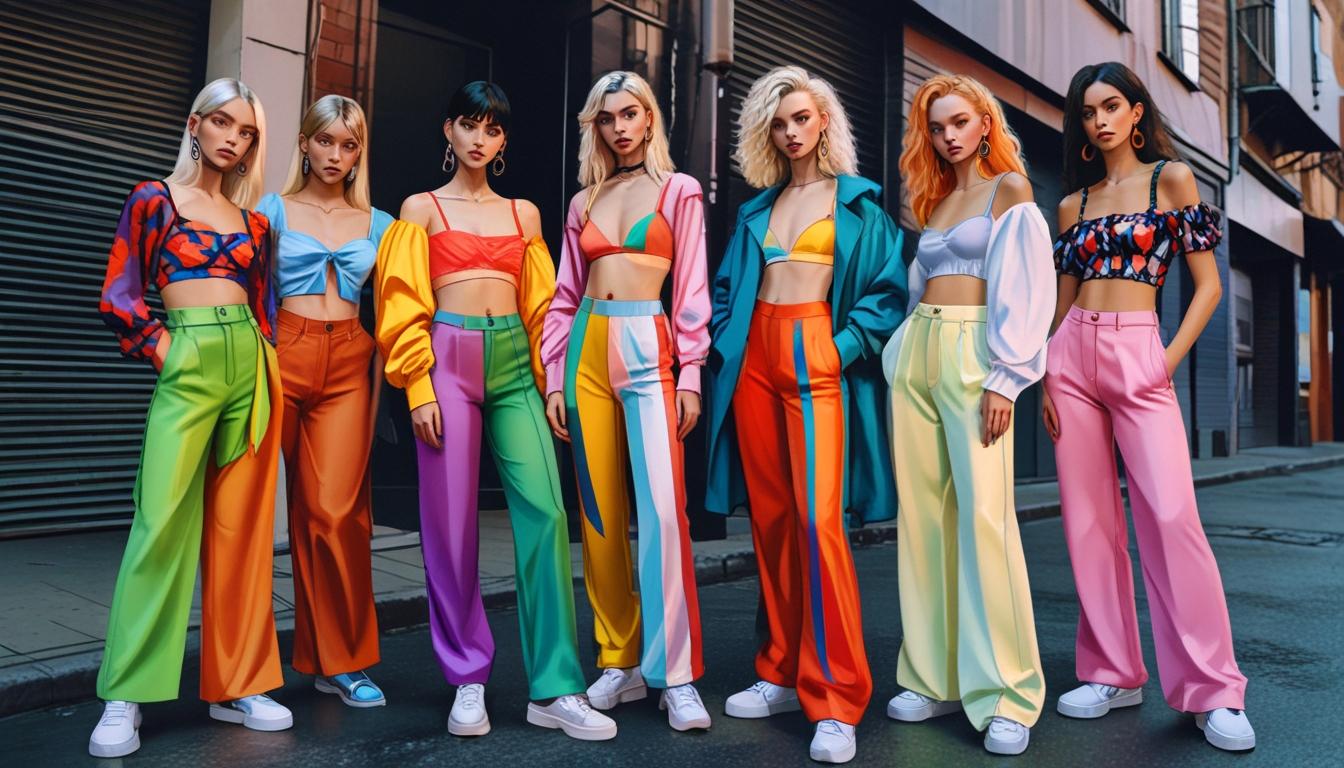

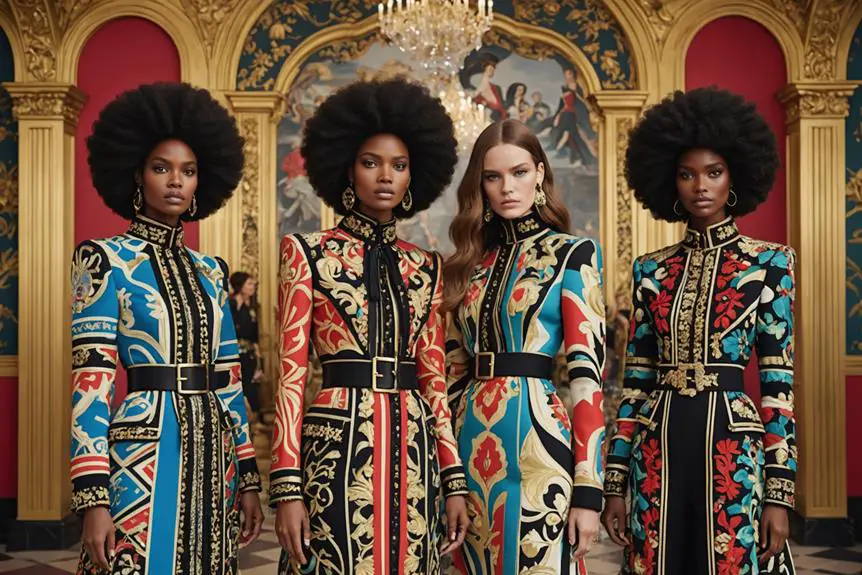
I truly enjoy looking at on this web site, it has got fantastic content.